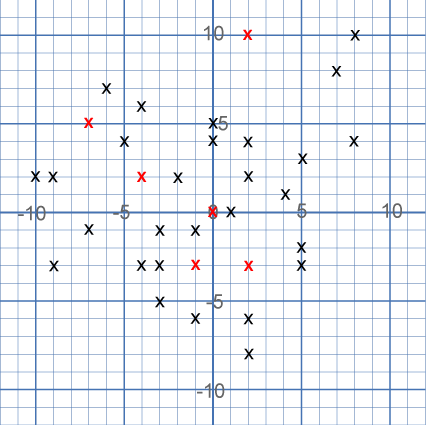Copyright © University of Cambridge. All rights reserved.
'Ten Hidden Squares' printed from https://nrich.maths.org/
Show menu
Why do this problem?
This problem has two aspects. A knowledge of coordinates in all four quadrants is necessary but also a secure understanding of the properties of squares. The activity challenges learners' misconceptions about how shapes "should be" oriented.
Possible approach
You could start by drawing some shapes by giving their coordinates, using all four quadrants. This sheet could be used on an interactive whiteboard or enlarged to A3 and drawn on directly. It would be advisable to have one or two squares which are at an angle to
the grid to help with the activity itself.
You could continue by choosing one point on the grid of the actual problem and then selecting a second point to form a second corner of a square. You could then ask where a third corner could be now and if there isn't a cross in the position, ask the class to suggest alternatives. Once you have found a possible third corner, ask where the fourth corner would have to be in order to make a
square.
After this introduction, the group could work on the rest of the problem with learners working in pairs so that they are able to talk through their ideas with a partner. They could use this sheet for both rough work and for recording. At the end of the lesson it would
be useful to discuss where on the grid the $10$ hidden squares are located as well as their different orientations and sizes.
Key questions
How does that square lie on the grid?
Where could its other vertices be?
Can you find another vertex for it?
